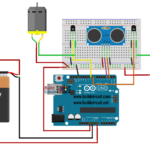9 Tips On How To Ensure a Smooth PCB Assembly Process
Printed Circuit Boards (PCB) are the foundation of any electronic device such as computers, smartphones, gadgets, and even cars. You must have seen a PCB which is generally green in color with lines of copper connecting the various components of the board. But have you ever wondered how PCBs are assembled?
If you don’t have an idea about the PCB assembly process, you can run into trouble and waste your time. You will also have a poor idea about how to use the assembly machines optimally and can produce a faulty batch of PCBs.
To help you get the most out of your project, we are going to provide nine useful tips for a smooth and efficient PCB assembly process. So, let’s dig in!
Among the key subjects on PCB Assembly Process include:
- Understand How PCB Assembly Process Works:
This section mainly introduces the PCB assembly process works.
Many people confuse between PCB assembly and PCB manufacturing. You must understand the difference between the two processes to make your project a success.
PCB manufacturing refers to the process of producing the bare board after a designer submits the Gerber files to a manufacturer.
The PCB assembly process begins after the manufacturing process is over. The various electronic components are placed on the PCB to make it functional and ready for your project. The electrical components are placed on the board using different technologies like surface mount technology (SMT), Pick and Place machines and manual soldering.
- Timely Communication is a Key Factor: This section briefly introduces the importance of timely communication.
The clear and straightforward interface is important for any process and the same applies to the PCB assembly process. You need to what you’re looking for from your PCB supplier. You don’t want to take the risk of assembling your PCB without getting to know the needs.
3. Don’t Make the Mistake of Avoiding DFM/DFA Check: This section briefly introduces the necessity of DFM/DFA check.
4. Run Inspection of the Assembly Materials: This section points out run inspection of the assembly materials is essential. Some of the aspects checked by engineers for incoming materials are- Quantity and model numbers in compliance with the BOM list, Using a multimeter, test frame and other methods to conduct sample testing, and Deformation, oxidation or broken parts of complex components like IC.
5. SMT Solder Paste Screening: This section point out the PCB assembly process begins with the application of solder paste to the bare board. If you have seen how a t-shirt is printed using a silkscreen, then you have a pretty fair idea of how the process works.
- Pick, and Place Surface Mounted Devices (SMD): This section introduces the advantage of place surface mounted devices (SMD).
- Secure SMDs with Reflow Soldering: This section describes how to secure an SMD by reflow soldering.
8.Time for X-Ray Inspection: This section introduces the function of time for X-Ray inspection.
X-ray inspection is carried out to detect quality defects and other flaws after the reflow soldering process. It’s also used for pre-flow soldering inspection and also for bare boards during the manufacturing process.
The X-rays create a digital image of the solder joints by passing through the silicone of the SMDs and reflecting off the metal in the solder. You can take the help of image processing solutions to analyze the images.
The high-concentration features of the PCB appear as a darker image enabling you to gauge the quality of the solder joint using a quantitative approach. The same can also be used to determine compliance with industry standards.
The X-ray inspection method is used mostly for layered and complex PCBs as you can see through the layers. You can also use the technique to determine the main cause of other defects such as faulty reflow profile, inadequate amount of solder paste, improper component placement and more.
X-ray inspection is an important part of the PCB assembly process before the final inspection is carried out. Eliminating this step can result in shorts, dislodging of components and reduced shelf-life of the PCB.
- Wrap Up with Final Inspection: This section describes the last step: warp up.
PCB assembly is a multi-faceted process that has become efficient with the advancement of technology and robotics. You need to establish clear communication with your customer and PCB assembler ensuring to run DFM checks and inspect incoming material. The use of machines makes component placement accurate while reflow soldering secures the SMDs successfully to the PCBs. Finally, carry out the inspection rounds and you are done! WellPCB uses state-of-the-art technology and advanced equipment to deliver the best in class products with trademark quality. If you have any needs or questions, please feel free to contact us.
Cloom and WeLLPCB are brother companies, Its covers include the value-added business of Wire harness production, assembling, custom design and most efficient delivery route.











